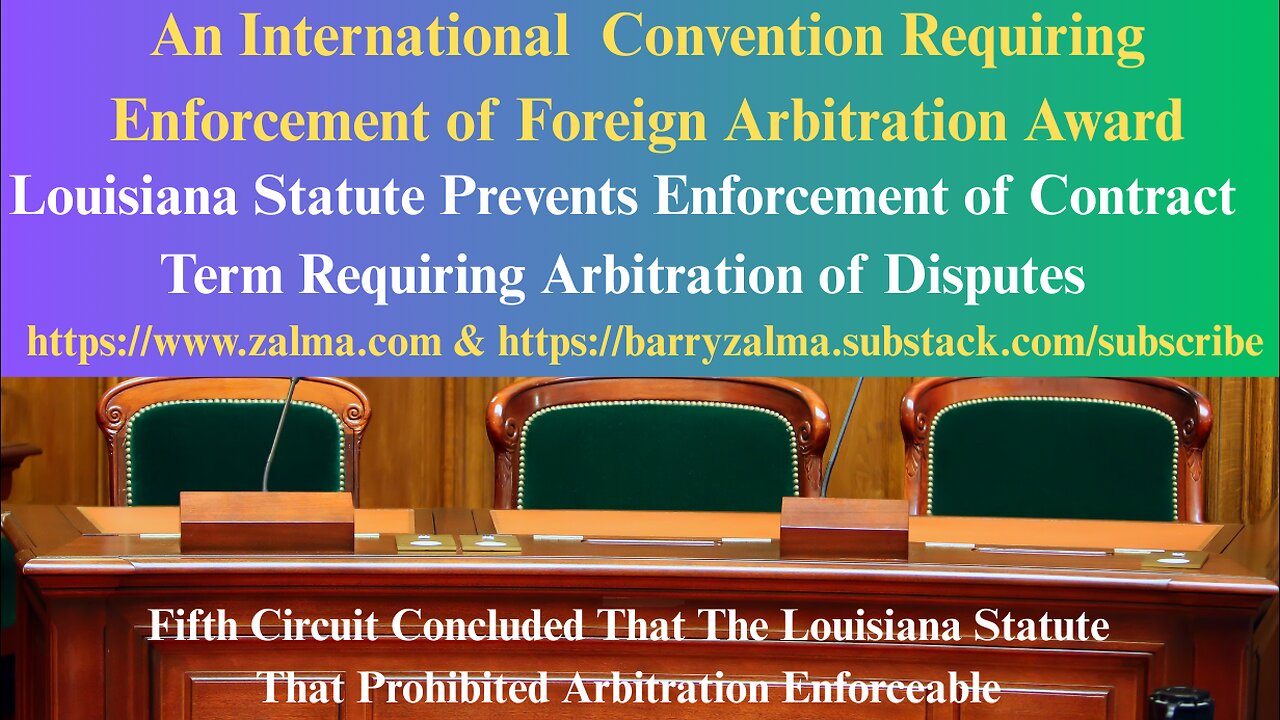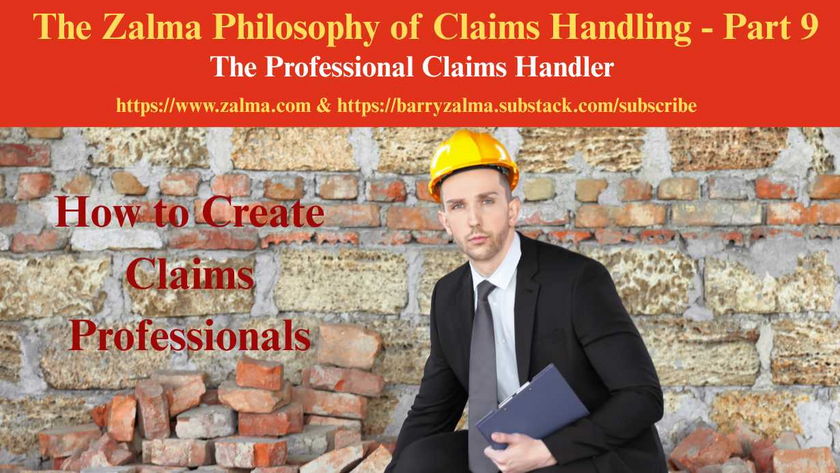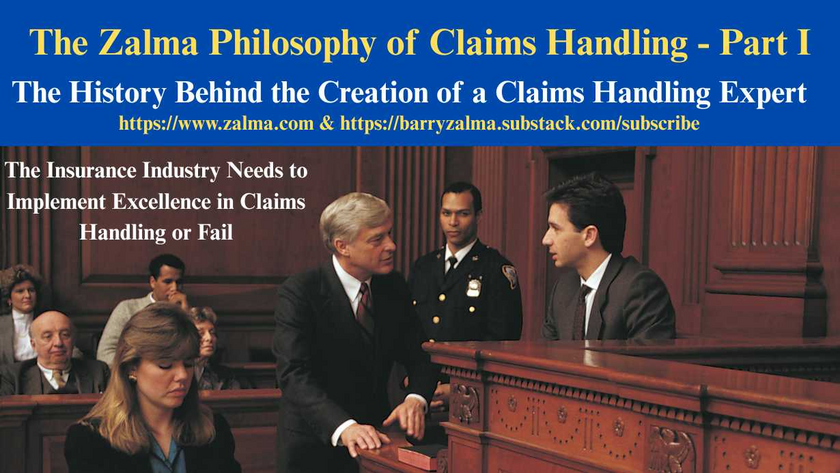
Fraud Attempted to Fund a Failing Business
Post 4867
Read the full article at https://lnkd.in/g2Xvbgjm; see the full video at https://lnkd.in/gxQWhzkF and at https://lnkd.in/gf8QQkAj; and at https://zalma.com/blog plus more than 4850 posts.
The insured was a contractor in Honolulu. He made an excellent living cheating his customers. The insured’s most lucrative scheme was an electronic vermin killer. It consisted of a long wire and a transformer. The contractor strung the wire around a house and plugged it in a wall. The device, charged with low voltage from the transformer, allegedly repelled vermin. The insured guaranteed that all roaches, flying insects and rodents could not pass the charge in the wire.
When it didn’t work and a customer called to complain the insured would ignore the complaints.
Since the tropical Hawaiian climate is a prime breeding ground for insects, the insured had no lack of customers. He bought a Ferrari sports car with the profits.
Eventually the attorney general of the State of Hawaii learned of his fraud. Investigation showed that the vermin killer did not work. Eye witnesses reported cockroaches dancing on the wire unharmed.
The Attorney General filed administrative charges accusing the insured of consumer fraud. The local press published reports of the charges. His sales began to drop. He needed cash flow.
The insured went to the most exclusive jewelry store in all of Honolulu. The store occupied the 15th floor of a high-rise office building. To enter he needed to show identification to a guard and pass through two steel doors.
He bought a single wrist watch at the jeweler and charged it on his American Express card. He asked the jeweler for, and received, an appraisal of the wrist watch.
He then visited the local public library and withdrew three textbooks on gemology.
He returned to his office and made a Xerox copy of the appraisal. He then covered the description of the wrist watch with a large Post-It Note. He photocopied 20 new copies of the appraisal. The Post-It-Note was invisible to the Xerox machine and he had clean appraisals with no descriptions.
Using the books on gemology, he wrote out descriptions for forty-five separate items of ladies and men’s jewelry. He set values beside each item so they totaled over $500,000. He gave the blank appraisals to his secretary and had her type up the descriptions and values he had written onto the appraisal forms he had created. He then made two copies of the new appraisals and destroyed the originals.
Armed with his appraisals he visited a large retail insurance brokerage in Honolulu. He advised the broker that he had recently acquired the jewelry from his deceased mother and needed it insured. The broker was familiar with the jewelry establishment and its impeccable reputation. He accepted the Xerox copies of the appraisals, prepared an application, and submitted the application and appraisals to various markets. He received quotations from three different insurers. Each agreed to insure the jewelry. The insured selected the insurer that offered the lowest premium. He explained to his agent that he had a slight cash flow problem and the agent helped him by financing the premium.
He made one payment on the premium finance contract and then reported a theft.
He advised his insurer that the jewelry was secured in the locked drawer of his office which he considered to be a safe. His office was a small structure with a warehouse facility where he parked his construction truck and, on that night, the Ferrari. It was an employee’s birthday and he and five employees went to a local restaurant to celebrate the birthday. Since they could not fit in his Ferrari, they all went in his foreman’s eight passenger van.
When they returned from the birthday party, they immediately noticed that the Ferrari was no longer in the warehouse. The aluminum overhead door was off its track. Someone had broken in. The thieves must have found the keys to his Ferrari in the desk. The desk drawer was broken and on the floor. No jewelry remained in the building. The insured was distraught since the jewelry was his only connection with his deceased mother. He demanded that the police do everything they could to catch the thieves and return his jewelry. He told the police he did not want insurance money. He only wanted his family heirlooms back. He even asked his insurer to offer a reward for the return of the stolen jewelry.
The insurer, faced with a $500,000 loss assigned their most senior investigator to the claim. He agreed with the insured and offered a $50,000 reward for the return of the jewelry. He then began his investigation with the recorded statement of the insured.
Besides advising the investigator of the theft he informed him that his mother had mailed him the jewelry shortly before her death. She died four years before in a small village in the Philippines. She was afraid that the Philippine government would take the jewelry for taxes. To avoid those taxes mother had simply packaged them in a plain brown wrapper and sent them by mail. She did not insure the delivery nor did she register or declare to US Customs the contents. He kept them in his home, for safekeeping until her death when he believed they had become his property. Then he took them to the jewelry store to establish the value of the gift his mother had made to him. He was astonished that the jewelry had as great a value as reported by the jeweler. He immediately took steps to insure the jewelry.
Two days after the theft, the police found the Ferrari in a gully. Since it was only one of eight Ferraris on the entire island, there was little the thieves could do with it. The police believed the thieves set it afire. The police found only a burned out hull and no evidence available to lead them to the thieves. The destruction of the Ferrari seemed to establish the legitimacy of the claim.
The adjuster began the steps necessary to complete what might be a routine investigation. His first stop was at the jewelry store. He found the gemologist who signed the appraisal. He showed the appraisal to him and asked that he verify the appraisal. The jeweler stated:
“That is our appraisal form. That is a copy of my signature. I have no record of ever doing this appraisal. I have no recollection of ever doing this appraisal. I have no knowledge of the person with the name of the insured. That isn’t unusual however since I do one thousand appraisals a year.”
“Do you have your file copy?” the adjuster asked.
“That’s what is strange, I can’t find the file copy. But my secretary, just about the time of this appraisal began chemotherapy treatment for cancer. She’s dying and I can’t disturb her.”
The adjuster had a logical explanation for the failure to verify the appraisal. He could not, however, let it sit. As a simple straightforward theft claim was becoming complicated.
The adjuster next had a friend who works the South Pacific attempt to verify that the insured’s mother did in fact live in the village in the Philippines described by the insured. The investigator was successful. He found neighbors and relatives who knew the insured’s mother. He could not, however, verify that she had $500,000 in jewelry to donate to her son. In fact, he found that the insured’s mother lived in a one room house on stakes with a grass roof, no electricity, no running water and no indoor plumbing. Her ex-husband still lived in Honolulu.
The insured’s family name was unusual in Hawaii and it only took the investigator two days to find the insured’s father. The father lived in a basement apartment in a rundown area of Honolulu. He was pleased to give the adjuster an interview. He had been estranged from his son for twenty years and his wife for ten so he had no first hand, up-to date information. He did acknowledge that his wife owned jewelry. He told the adjuster:
“Yes, I believe it was very valuable jewelry she owned.”
“How much to do think it was worth?”
“At least $500-$600.”
The adjuster began his investigation in earnest. He invited the insured’s secretary out to lunch. Over a chef’s salad and a glass of ice tea he learned the secretary’s life story. He knew she had been in Hawaii for only two years having come to the islands from Iowa. She was young and very innocent. She liked her job but made only enough money to survive in the Islands. She could not believe the cost of housing compared to what it had been in Iowa.
After gaining her confidence the adjuster confronted the secretary with the result of his investigation. He told her he knew that the appraisals were not done by the jeweler. He showed her where he had discovered that the typewriter used to type the description of the items of jewelry was different from the typewriter used to type the name of the appraiser. He told her that he liked her and would be very sorry if she was involved in aiding her boss in committing a crime.
She began to cry. When he calmed her down, she confessed that she had typed in all of the descriptions and the values of the jewelry. Her boss, the insured, took the print ball out of the IBM Selectric typewriter and smashed it under his shoe. If asked, she was to say that his children broke the typewriter while playing with it. The adjuster thanked her, paid for lunch and suggested she get a new job. He told her he would do what he could to keep her out of criminal problems.
He then got permission from his client, the insurer, to deny the claim.
He wrote a simple brief, letter to the insured stating as follows: “Your claim is denied because it was presented by you with the knowledge that it was false and fraudulent.”
He said nothing more. The adjuster, as required by law, reported his findings to the local police agency and to the U.S. Postal Inspectors. Both promised to complete a prompt criminal investigation and prosecute the insured for insurance fraud. The adjuster waited, patiently, for five years. Every twelve months he would ask the police concerning their investigation. He would always receive the same response “We’re working on it.”
On the fifth year, just before the statute of limitations ran, they arrested the insured for insurance fraud, wire and mail fraud. On the testimony of the adjuster and the secretary the insured was convicted. The court sentenced him to five years in jail, suspended on the condition that he actually serve 30 days and that he make restitution of $10,000 in investigation costs to the insurer.
Five years elapsed since his conviction. He is still making a living as a contractor in Hawaii defrauding his customers. He paid when the probation officer caught him what he told the probation officer he could afford. In five years the insured paid, on the restitution order that is a condition of his probation, a total of $250.00. His probation is over.
The crime did not succeed. He did not collect $500,000. The insurance company did not succeed. It paid out over $10,000 to its investigators which it will never recover and the ordered restitution was never paid.
Adapted from my book "Insurance Fraud Costs Everyone" Available at Amazon.com.
(c) 2024 Barry Zalma & ClaimSchool, Inc.
Please tell your friends and colleagues about this blog and the videos and let them subscribe to the blog and the videos.
Subscribe to my substack at https://lnkd.in/gmmzUVBy
Go to X @bzalma; Go to the Insurance Claims Library – https://lnkd.in/gwEYk; and videos at Rumble.com at https://lnkd.in/gRthzSnT.
Newly Acquired Auto Not Insured if Insurer not Notified Within 30 Days of Acquisition
Post 5244
Read the full article at https://www.linkedin.com/pulse/failure-respond-complaint-deemed-culpable-willful-zalma-esq-cfe-yqbzc, see the video at and at and https://zalma.com/blog plus more than 5200 posts.
Insured’s Error Eliminated Coverage
In Selective Insurance Company Of South Carolina v. KS Automotive, LLC d/b/a KS Automotive, et al., No. 2:25-cv-02985-JDW, United States District Court, E.D. Pennsylvania (December 8, 2025) Selective Insurance Company of South Carolina issued a commercial auto insurance policy to KS Automotive LLC (and its related entities) for the period September 27, 2023, to September 27, 2024. The policy covered three types of vehicles: those specifically listed, hired vehicles, and non-owned vehicles used in KS Auto’s business. If KS Auto acquired a new vehicle, it had to ...

Detail Charging Defendant for Fraud is Sufficient
Post 5242
Read the full article at https://lnkd.in/g_HVw36q, see the video at https://lnkd.in/gpBd-XTg and at https://lnkd.in/gzCnBjgQ and at https://zalma.com/blog plus more than 5200 posts.
Charges that Advises the Defendant of the Crime Cannot be Set Aside
In United States Of America v. Lourdes Navarro, AKA Lulu, No. 25-661, United States Court of Appeals, Ninth Circuit (December 4, 2025) Lourdes Navarro appealed the district court’s denial of her motion to dismiss the indictment and enter final judgment was in error.
FACTUAL BACKGROUND
The indictment alleged that insurers reimburse only for medically necessary services. Navarro performed unnecessary respiratory pathogen panel (RPP) tests on nasal swabs collected from asymptomatic individuals for COVID-19 screening.
Navarro billed over $455 million to insurers for those additional RPP tests that she knew to be medically unnecessary. These allegations constituted a plain, concise, and definite written ...
Louisiana Statute Prevents Enforcement of Contract Term Requiring Arbitration of Disputes
Post 5241
Read the full article at https://www.linkedin.com/pulse/international-convention-requiring-enforcement-award-barry-sttdc, see the video at and at and at https://zalma.com/blog plus more than 5200 posts.
In Town of Vinton v. Indian Harbor Insurance Company, Nos. 24-30035, 24-30748, 24-30749, 24-30750, 24-30751, 24-30756, 24-30757, United States Court of Appeals, Fifth Circuit (December 8, 2025) municipal entities including the Town of Vinton, et al sued domestic insurers after dismissing foreign insurers with prejudice. The insurers sought arbitration under the Convention on the Recognition and Enforcement of Foreign Arbitral Awards (the “Convention”) but the court held Louisiana law — prohibiting arbitration clauses in such policies—controls, as the Convention does not apply absent foreign parties who ...

Zalma’s Insurance Fraud Letter
Read the full article at https://lnkd.in/dG829BF6; see the video at https://lnkd.in/dyCggZMZ and at https://lnkd.in/d6a9QdDd.
ZIFL Volume 29, Issue 24
Subscribe to the e-mail Version of ZIFL, it’s Free! https://visitor.r20.constantcontact.com/manage/optin?v=001Gb86hroKqEYVdo-PWnMUkcitKvwMc3HNWiyrn6jw8ERzpnmgU_oNjTrm1U1YGZ7_ay4AZ7_mCLQBKsXokYWFyD_Xo_zMFYUMovVTCgTAs7liC1eR4LsDBrk2zBNDMBPp7Bq0VeAA-SNvk6xgrgl8dNR0BjCMTm_gE7bAycDEHwRXFAoyVjSABkXPPaG2Jb3SEvkeZXRXPDs%3D
Zalma’s Insurance Fraud Letter (ZIFL) continues its 29th year of publication dedicated to those involved in reducing the effect of insurance fraud. ZIFL is published 24 times a year by ClaimSchool and is written by Barry Zalma. It is provided FREE to anyone who visits the site at http://zalma.com/zalmas-insurance-fraud-letter-2/
Zalma’s Insurance Fraud Letter
Merry Christmas & Happy Hannukah
Read the following Articles from the December 15, 2025 issue:
Read the full 19 page issue of ZIFL at ...
The Professional Claims Handler
Post 5219
Posted on October 31, 2025 by Barry Zalma
An Insurance claims professionals should be a person who:
Can read and understand the insurance policies issued by the insurer.
Understands the promises made by the policy.
Understand their obligation, as an insurer’s claims staff, to fulfill the promises made.
Are competent investigators.
Have empathy and recognize the difference between empathy and sympathy.
Understand medicine relating to traumatic injuries and are sufficiently versed in tort law to deal with lawyers as equals.
Understand how to repair damage to real and personal property and the value of the repairs or the property.
Understand how to negotiate a fair and reasonable settlement with the insured that is fair and reasonable to both the insured and the insurer.
How to Create Claims Professionals
To avoid fraudulent claims, claims of breach of contract, bad faith, punitive damages, unresolved losses, and to make a profit, insurers ...

The History Behind the Creation of a Claims Handling Expert
The Insurance Industry Needs to Implement Excellence in Claims Handling or Fail
Post 5210
This is a change from my normal blog postings. It is my attempt. in more than one post, to explain the need for professional claims representatives who comply with the basic custom and practice of the insurance industry. This statement of my philosophy on claims handling starts with my history as a claims adjuster, insurance defense and coverage lawyer and insurance claims handling expert.
My Training to be an Insurance Claims Adjuster
When I was discharged from the US Army in 1967 I was hired as an insurance adjuster trainee by a professional and well respected insurance company. The insurer took a chance on me because I had been an Army Intelligence Investigator for my three years in the military and could use that training and experience to be a basis to become a professional insurance adjuster.
I was initially sat at a desk reading a text-book on insurance ...














